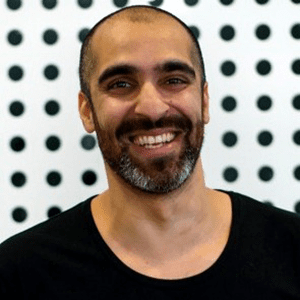

77: From burnout to brilliance
In this episode Trudy MacDonald and Stephanie Christopher tackle this rich and relevant topic, uncovering the evolving landscape of work and leadership challenges – a must listen podcast for all business leaders.
Over the past few years, there has been a shift from ‘The Great Resignation’ to ‘The Great Renegotiation’ and ultimately ‘The Great Exhaustion.’ Leaders are facing burnout in an environment where they are under more pressure than ever before.
Trudy highlights four key reasons contributing to burnout:
- Ways of working: Hybrid and remote work models are here to stay, impacting relationships and connections within teams.
- Role clarity: Leaders have taken on too many responsibilities, leading to role compression and overwhelming workloads.
- Changing demands of leadership: Leadership now requires a more humanistic approach, balancing empathy and accountability, which can be challenging.
- Culture: Creating a culture of psychological safety where toxic behaviours are not tolerated is crucial, especially in remote or hybrid work environments.
Trudy emphasizes that this shift in leadership requires leaders to be visible, accessible, and empathetic. By building trust and a sense of belonging within teams, leaders can create a culture where accountability and support go hand in hand. Starting with the leadership team and modelling the desired behaviours is essential for implementing these changes effectively.
Hear how leaders can help themselves and their teams to mitigate burnout and become a high performance team.
Trudy MacDonald is the Managing Director and Founder of TalentCode HR, a strategic HR consultancy that partners with leaders to boost business performance. Trudy is an award-winning leader and HR professional with a knack for maximising the performance of businesses through people. With expertise in strategy, leadership development, and cultural transformation, she has the unique ability to inspire fresh perspectives.
Stephanie: Welcome to TEC Live, Stephanie Christopher here, CEO of The Executive Connection. We connect leaders with a trusted network of people who help them succeed. We’re lucky today we have a TEC Live frequent flyer joining us, Trudy MacDonald, who is the Managing Director of TalentCode HR, an award-winning presenter, a really interesting expert on leadership and helping teams thrive by having the systems and the culture in place to really support teams and leaders to deliver the very best for the business.
So we’re with a different topic today with Trudy, talking about from burnout to brilliance, reviving teams and nurturing success. So how can leaders transform their teams from burnout to brilliance in today’s workplace? Trudy MacDonald, welcome back to TEC Live.
Trudy: Thank you, Stephanie. It’s always a pleasure to be here.
Stephanie: Yeah, well, it’s always great to chat to you. They can film us or not, but I love the conversation.
Trudy: Wonderful.
Stephanie: So a slightly different topic, where did this come from?
Trudy: It’s interesting because I’ve always got my finger on the pulse in terms of what leaders are talking about and their biggest challenges. And over the last three or four years, we’ve been through a bit of a cycle in terms of the talent market and where we are today has been dubbed The Great Exhaustion. And I think that’s really interesting because when we look, we went from The Great Resignation to the not so Great Resignation to what was dubbed The Great Renegotiation. And I think that’s where we were trying to find out how we’re going to work and our ways of working.
But then late last year, you might recall, quite quitting was a term that started hit the market.
Stephanie: Yes, I do.
Trudy: And that was this sense that people were generally change fatigued and they were disengaged. What I’m hearing from leaders right now is, ‘My teams are burnt out.’ I’m hearing from leaders that they personally are burnt out. And this is really challenging in an environment where leaders have got more pressure than ever before to drive results, to drive accountability, and really to get their team on the bus.
Stephanie: There’s so much here to unpack. What’s caused this?
Trudy: Well, it’s interesting. So as I started to really lean into this topic, what I recognised is that most leaders across Australia have invested heavily in supporting their teams. So well-being initiatives have been a big focus for organisations. However, when you look at the burnout statistics, the dial’s not moving. In fact, burnout is actually going up. So it really got me curious around what the root causes of this is. And it’s interesting because I don’t want to undermine the importance of well-being initiatives there. They’re absolutely critical. However, from my perspective, I’m really thinking about what can leaders do within their organisations to get to the root causes?
Stephanie: So before we do that, can you tell me, you talked about the stats, well, how are we defining burnout and how do you measure it?
Trudy: Yeah, good, good. So there’s quite a bit of research around this on a global basis, and I think what’s really interesting is the macro research that I’ve seen is in Australia, roughly 62% of Australians have indicated in the last 12 months that they’ve experienced some level of burnout compared to 48% on a global basis.
Stephanie: Wow.
Trudy: Australia’s topping the charts on this and it’s not a good thing. Interesting to understand why, and I haven’t quite got to the bottom of that. However, talking to a lot of leaders who work on a global basis, one of the suggestions is that Australians just work really long hours. Now, I don’t think that’s the root cause of the problem, but it may be fueling some of the numbers that we’re seeing.
Stephanie: And the numbers, how are they defining, what are they calling burnout?
Trudy: So burnout is perception, and often it’s characterised by chronic fatigue. So this feeling of constantly being exhausted. So there’s a physical element to it, but then there’s a cognitive element to it as well. So impaired decision-making, lack of motivation, and ultimately this sense of, ‘I just can’t do this anymore.’
Stephanie: So it’s different from stress, isn’t it?
Trudy: It is different from stress.
Stephanie: And stress I know could lead to burnout.
Trudy: Yes.
Stephanie: But I’m thinking of stress being more of a heightened emotion and up and down and…
Trudy: Yeah, and there’s a healthy level of stress and people will perceive it differently as well.
Stephanie: Yeah. Well, stress is more active.
Trudy: Yes.
Stephanie: And how you’re describing burnout to me feels passive.
Trudy: Yes, absolutely. And I think it’s a cumulative response to a whole range of different things. And that’s what I’ve got really curious about. What is leading to this? But more importantly, how can leaders drive their teams out of this state of burnout?
Stephanie: And what are you finding? What’s leading to it?
Trudy: Yeah, so there seem to be four key reasons. So number one is the fact that our ways of working, whether that be hybrid or remote. Number one, they’re here to stay, and I think that’s interesting in itself. And quick bit of data there, LinkedIn reported late last year that 20% of the jobs advertised were 100% remote, 50% of applicants were going to those jobs. So it’s interesting to understand that the workforce want remote work. Now, whether organisations are offering 100% remote or hybrid, that’s having implications. And the implication is not so much about productivity, which is what we’re all worried about in the first place. It’s actually our inability to build relationships, create connection, and there’s a whole lot of downstream impacts to that.
Stephanie: It’s really interesting. With our members, this is a topic that comes up all the time, and I love the example of Zoom calling their staff back to the office.
Trudy: Yes.
Stephanie: That was the big irony. We have just recruited a number of bright, driven, smart young people and they want to come in a 100%.
Trudy: Well, here’s the interesting twist on the statistics. It’s actually Gen Y who want to work remotely more so than the younger generation. And I think that tells us something. However, what the younger generation want is they want connections. They want professional relationships.
Stephanie: They want fun.
Trudy: They want fun, they want development opportunities. And if our experienced workers are not in the office and they’re burnt out, it doesn’t matter.
Stephanie: I know that because I know that there’s days in the office when there’s a few of us there, and if one of the newer team members are there, I feel a responsibility of how do we create an environment here? But then I’ve learned that they’re there because that’s where they want to work.
Trudy: Yeah, that’s right.
Stephanie: Physically, because home doesn’t work for everyone anymore.
Trudy: No.
Stephanie: We have to make it work, but it doesn’t.
Trudy: No.
Stephanie: So rather than making this a whole conversation about working from home, so ways of working is one of the four things?
Trudy: Ways of working is number one. The second one is actually role clarity. So I’m going right back to basics here. So right now, boards are putting a lot of pressure on CEOs to take performance to the next level. ‘We’ve got through this period and let’s get on with it.’ And subsequently, CEOs are needing to lead differently. However, what’s happened in the last few years is with good intentions, a lot of leaders have just rolled up their sleeves and got in with the troops to help them do their jobs. So what’s happened is what I refer to as role compression, a lot of leaders are doing many elements of the roles of other people, and subsequently that cascades right down through the organisation.
So people have got too much on, they’re not necessarily doing what they should be doing. So leaders aren’t elevating, they’re being compressed. And then let’s add to that, the pressure to be implementing strategy, people just don’t have time. And that’s one of the biggest things I’m hearing from leaders right now. How do I implement strategy when everyone’s screaming, ‘Burnout, I’ve got too much on?’
Stephanie: And it starts with the leader themselves, doesn’t it? What you’re saying, that role compression.
Trudy: Yeah, that’s right.
Stephanie: What an interesting point about the genesis of that because that’s what we did see in 2020.
Trudy: Yes.
Stephanie: We did see in 2020 was leaders having to, because there was an onslaught of so much extra different work. So it was all hands on deck.
Trudy: Yes.
Stephanie: And so am I hearing from you that people got used to that?
Trudy: Yeah.
Stephanie: Because that might’ve been what saved the farm anyway.
Trudy: Absolutely. And I think the other thing to add to that is with the shift in the talent market where just six months ago it was really hard to find great talent. Now, that’s changed. It’s changed really quickly.
Stephanie: Yeah, it has.
Trudy: However, during that period, a lot of teams weren’t fully resourced. So what was happening? Leaders were jumping in and doing what they needed to do to support their teams because people were doing more than one job. And the other thing that happened is leaders pulled back on the challenge within their organisation. So strategic plans went into the bottom drawer. We weren’t holding people accountable, and that’s created an expectation around what my job is. However, the new normal that was created is not actually the ways of working that we need moving forward.
Stephanie: This is really ringing true, because if you have a team that’s understaffed, if you’re undermanned, you can’t be expecting the same… Well, you think you can’t be expecting the same of your team because you don’t have your normal headcount.
Trudy: Yeah, that’s right.
Stephanie: Yeah, really interesting. Let’s get to three and four, and then I have to decide which one I want to dig into more.
Trudy: Yeah, sounds good.
Stephanie: What’s number three?
Trudy: So number three is the changing demands of leadership. So what it means to be leading in today’s era is very different to what it was a few years ago. And in fact, even through COVID, it’s changed. So what are the key changes? Two things. Number one, we’ve all heard we need to adopt a much more humanistic approach to leadership. So we need to lead the whole person. Back in our generation, Stephanie, we came to work, we left our personal issues at the door and we came to work.
Stephanie: You didn’t even mention your husband, ever.
Trudy: That’s right, That’s right. But COVID brought us into people’s lives fully.
Stephanie: Yes.
Trudy: And now there’s an expectation, particularly with the heightened awareness around mental health, which is fantastic that we lead the whole person. And for many leaders, this is not a comfortable space for them to go.
Stephanie: No.
Trudy: Now, you combine that with the pressure leaders are under to drive performance. And now we’ve got this really interesting balance where leaders need to have empathy, but they need to drive accountability. And that’s a really tricky combination to have.
Stephanie: It’s a very tricky combination because also for leaders or organisations culturally to be going deeply into the whole person for the first time, some of us in our professions, maybe that was part of what it was, but how far do you go?
Trudy: Yeah, that’s right.
Stephanie: And at what point do you put guardrails around that of, ‘Yes, I understand. Great. That’s a given. We understand, but you still have to do your job?’
Trudy: Yeah. And if I can just share quite a funny example, but a real example with you.
Stephanie: Yes, please. Give us a funny example.
Trudy: Okay, but it’s happening everywhere and I’m sure the listeners will relate to this. So we had a leader come to us and said, ‘Look, I’ve got a member of my sales team.’ And he called me the other week and said, ‘Look, I can’t come into the office today because I’ve now got a dog and I’ve got to stay home and look after the dog.’ So leader, no doubt, puts his empathetic hat on and said, ‘Look, I put myself in your shoes. I understand it. I’ve got a dog myself. Sure, work from home today.’
Two weeks later, gets a phone call from the same sales guy. Sales conference has been planned internally, two-day offsite, ‘Can’t come to the offsite, still got the dog, requires some care, hasn’t been trained yet, can’t make the offsite.’ Now, at that point, the leader’s starting to scratch his head going, ‘Okay, what do I do with this? Empathetic approach, don’t want to lose this guy. Don’t want to have the tough conversation needing there,’ but end up saying, ‘Okay, let’s dial in. We’ll do a hybrid approach to the conference.’ You know where this is going, right? A few weeks later, the sales guy calls in and says, ‘You know what? I know my job required me to travel around and visit customers face-to-face, not going to work for me anymore. Got this dog, you’ve got it.’ And at that point, my team gets the call and says, ‘Okay, what do we do with this?’
So there’s this balance. We don’t want to go too far towards the empathetic approach, but we can’t just drive accountability without empathy. So to give you another example, a senior leader the other week who had been with this organisation for 20 years, high performer, new CEO was brought in with a mandate from the board to drive performance and drove this senior leader into the ground. Self-professed, ‘I’ve been burnt out, I’ve left. This is going to take me a long time to get over.’
And you know what his comment was? He said, ‘If this CEO had just sat down and asked me, ‘How am I feeling? How can I help you?’ There was no empathy.’ And subsequently the leader shared with me, ‘I didn’t feel seen, I didn’t feel heard, led to burnout, and now I’m off.’
Stephanie: What do you do as a leader, this is hypothetical, but what do you do as a leader if one of your team, if that senior leader said, ‘I’m burnt out and it’s just I’m really struggling? But the CEO is reporting to the board on results.
Trudy: Yes.
Stephanie: What do you do? How do you handle that?
Trudy: Yeah. I think the starting point for leaders is to hold up the mirror and actually ask, ‘How am I engaging with my team? Have I got the balance right between being supportive and driving results?’ And one of the key takeaways I find really powerful to understand is that accountability done well is not punishment. It’s actually what people need to.
It gives clarity. And as human beings, we love to have goals to work towards, and there’s nothing more invigorating than being supported to achieve those goals. So I think the hold up, the mirror moment for any leader if you’ve got that challenge is to ask, ‘Okay, I’m driving accountability here. I’ve got my eye on the outcome, but what am I doing to support this person? And more importantly, am I creating a culture within the team that’s high support so that team members are supporting each other?’ Because in that high supporting environment, I think we can actually get through this burnout.
Stephanie: And I’m looking at you and thinking it’s really getting into what support means too, because support doesn’t mean… It can’t mean coming from a CEO hat, everyone drops everything.
Trudy: No.
Stephanie: And everyone goes out for coffees and walks.
Trudy: No, that’s right.
Stephanie: Or whatever, or just stops. It has to be in the context of work.
Trudy: That’s it.
Stephanie: Because another thing I do know, as a leader, everybody has something in their life.
Trudy: Absolutely. We all do. So how do we support each other to get the balance right? So this is where I think role clarity becomes an important piece. So often this concept of a reset is really powerful if you’re starting to sense or hear explicitly that your team’s burnt out. How do we bring the team together, have the honest conversation about how we’re feeling, be really honest about where we need to go, and then ask ourselves how do we do this? And how do we support each other? And part of that conversation is likely to be what are we going to stop doing? And that may be, back to the concept of role compression, how do we start to delegate some of the responsibilities through the organisation, particularly if we’re doing parts of other people’s jobs? How do we elevate the things that are going to make a biggest difference and give ourselves permission to stop doing other things?
Stephanie: Yeah, that’s important and let’s come back to stop doing other things and that role compression, as soon as you give me number four.
Trudy: Yeah. So number four is about culture. And the element of culture that’s so critical here is ensuring as a leader that we don’t tolerate toxic or unconstructive behaviours. And again, this all comes together. So if you’re in a hybrid or remote environment and we don’t have strong interpersonal relationships with others, particularly cross-functionally, what happens is silos become even more pronounced. Now, most organisations are challenged by silos anyway, that you add the remote factor in there and it really magnifies.
So as leaders, are we talking about psychological safety? Are leaders aware of what they need to do to create an environment where we can challenge each other, where we can feel safe enough to share how we’re feeling and to remove some of the microaggressions that actually lead to people not feeling included and belonging, which ultimately is going to fuel burnout? Because we don’t have that network to actually talk to. We don’t have that network to ask for help or to really unpack challenges and overcome them.
Stephanie: So give me an example of microaggression from a leader or that a leader might spot in the team?
Trudy: So microaggressions could be as simple as in a meeting when somebody shares an idea or asks a question, just a little look, just rolling the eyes, raising the eyebrows, very, very subtle, but enough for the other person to feel that they don’t belong or that they’re not respected. Often behaviour we see is between team members or between functions. ‘Let me just CC the manager on an email I sent back to you outlining that you didn’t deliver on that outcome.’ Things like that are really divisive.
Stephanie: Yes.
Trudy: And if you start to get that behaviour, the whole organisation shuts down. So ultimately, the bigger picture here is we need to work as a high performance team at many different levels within the organisation. If we don’t have those relationships, if we’re tolerating toxic behaviours, we don’t get off ground zero.
Stephanie: So let’s go back to… So you talked about ways of working. Then the second thing you talked about was-
Trudy: Role clarity.
Stephanie: Role clarity, different kind of leadership now. The third one was-
Trudy: Leadership and how the face of leadership has changed.
Stephanie: And then the fourth one was psychological safety. So let’s go back and talk about this role compression because I think that’s really interesting and I think I can see it in our business and I can see it in businesses around members. And as I said, part of it is behavioural from what worked in the most recent business cycle of crisis, and also responding to more recent times of a talent shortage.
Trudy: Yes.
Stephanie: Talk to me more about how can a leader get out of it or how can the CEO support their team to get out of this role compression?
Trudy: Yeah, it’s a great question. And there’s actually a fairly simple solution to this. It’s just about the discipline of doing it. So number one, let’s make sure you have an up-to-date, really clear strategy for your business. Plan on a page. What are the game changers? What are the things that are going to move the dial for us? So straight away, that’s giving the leaders a pretty good signal around what they should be focused on.
Now, every role is going to be a combination of strategy implementation, and business as usual. And it’s quite useful to separate the two out because where the role compression’s happening is on the business as usual side. So if we can define the strategy and define what the metrics for success are at a business level, straight away, the leader and the leadership team can sit down and say, ‘What are our biggest priorities? What do we need to focus on? And given how many hours there are in the day and the capacity that we have as leaders, what feasibly can we be doing?’ And the clear measures of success.
Stephanie: Yes.
Trudy: So that’s step number one. Now, from there, now you’ve got the framework to cascade that down through the organisation. So how do leaders then take that into their functional areas, right down to every individual? The interesting thing there is for more junior roles or operational roles, most of their focus is going to be business as usual and very little on strategy, and that flips once you start to get up to a senior level. So by design, let’s re-look at every single role in the business. And what that means is actually just tear up your job descriptions because most people don’t look at them, but when they do and they gravitate back to that, it creates confusion. Most job descriptions are a big long list of tasks. There’s no sense of prioritisation.
Now, once you’ve got that design and you’ve got everybody aligned, there’s a few things you can do to make sure that it doesn’t slip. One is the concept of every 90 days as a leadership team coming together and checking in, and there’s a really simple analysis that you can do asking everyone in the team to report, ‘What’s the great work that I’ve been doing?’ Work that’s adding future value, often aligned to strategy. ‘What’s the good work that I’m doing?’ And this should be linked to those big rocks or the things that are driving business as usual success.
But then interestingly, ‘what’s the poor work?’ Waste of money, waste of bandwidth, waste of time? The wombat analogy is a useful one, and that’s really powerful. And then what’s missing? Now, that’s simple conversation every quarter should lead to the leadership team making just one change. What am I going to delegate down because it’s poor work for my role? And what can I reintroduce into my role because that’s what I should be focused on?
Stephanie: Really interesting, because I think as a business, you can do the first part, which is getting plan on a page, thinking about your quarterly rocks, but it can become a job description of its own.
Trudy: Yes.
Stephanie: Meaning that it’s a list of tasks, but not thinking about is this leading to the overall number and target for the business? And I love your great, good, poor work. So simple, really simple. And then if you even cascade that conversation through the team, it might be a whole lot of stuff you can just throw out in the bin and no one needs to do.
Trudy: Yeah, that’s it. So with the poor work, do we delegate it? Do we stop doing it? It’s a classic case of somebody saying, ‘You know what? I spend two hours a fortnight compiling data into a report that nobody looks at. Let’s get rid of that.’ It’s two hours of your time. And whether that be reinvested into just well-being initiatives and space and time to think or redirecting that person to high value work.
Stephanie: Great. That sounds good. So that’s role compression. I think we’ve talked about psychological safety at other times. Let’s really dive into leadership, being a different kind of leader now because well, I think it’s complex.
Trudy: It’s very complex.
Stephanie: And change is complex, and I think getting the balance right between empathy and accountability is something that I think leaders struggle with. And you can be too weighted on either side, and that’s going to be a problem.
Trudy: Yes.
Stephanie: So can you talk a bit about how you can support leaders to make that change?
Trudy: Yeah, absolutely. So there’s some really great practices that leaders can start to embed. And I think for leaders to be visible and accessible, which is a big part of this because we need to be engaging with our teams in meaningful ways. One of the really practical things you can do there is set up a cadence for yourself. When am I having one-on-ones? When are we having team meetings? When have I got meetings booked with myself to do my deep work? But then when am I available for others?
So straight away, that simple activity of booking out your calendar a year in advance and communicating very openly with your team when you’re available, that creates accessibility. And that’s a really good start because in an environment where, remember, leaders are also burnt out, often team members won’t have the courage to go to the leader to ask-
Stephanie: ‘I know you’re busy. I know you’re busy.’
Trudy: ‘I know you’re busy.’ That’s right. Or they just don’t engage. Add to that, that they’re possibly working remotely or in a hybrid environment. They’re not talking to anybody. So you can see the connection between all of these areas. So number one, book out your calendar, be accessible. Number two is what do we talk about when we are accessible and we actually engage with our teams? So there’s two types of conversations I think we need to get really good at. One is how do we get really good at facilitating team interactions? So when we have our team meetings, what does that look like? And then what happens during those one-on-one conversations?
So let me start with the one-on-ones. There’s a few simple things. I was listening to a podcast the other week from Harvard, and what the professor was saying is he said, ‘Look, if you can get people to identify and reflect on the things that they enjoy about their role, it will actually give them energy and it will give them a sense of purpose.’ And that will fuel a whole lot of really positive emotions, but also outcomes that you’re looking for. Asking in those one-on-ones, ‘What are you enjoying about your work? What are you least enjoying?’ And just getting them to articulate and talk through that is really powerful.
The interesting thing is you don’t need to solve the problem for them. But then the third question is, ‘What can I do to help?’ So there’s three really simple questions. And I think the power here as a leader, and this is how we display empathy because a lot of leaders are not naturally empathetic. I’ve had leaders go, ‘That’s not even in my vocabulary,’ is to listen. Really simple tip, just listen. And if you can just zip those lips and listen, what you’ll start to do is understand what’s going on in that other person’s head. Why are they enjoying this work? Why are they not enjoying this work? Which leads to a high care conversation around how you can help.
Stephanie: Interesting. And that doesn’t need to be every time. No, but that’s a good way to set up a different kind of conversation.
Trudy: It is. And interesting what the Harvard professor was suggesting, that if people are spending just 20% of their time doing things that they love, it’s enough to actually fuel the motivation and the purpose and the energy, because it goes without saying. We don’t all love every element of our work, but having that conversation’s really powerful. So that’s one piece.
The second piece is we really need to get to know our team members, and it’s thinking about people beyond a transaction to actually getting to know them as a person. So how do we do that? There’s three lines of questioning we can ask. One is, do we understand the history of our people? Where have they come from? What are their skills? What are their capabilities? What are their experiences? Because what we see on a day-to-day basis is not the whole person, do we understand what drives them, what motivates them, et cetera? So think about reflecting on the past. There’s a line of questioning.
Second part of the question is, let’s go forward. What are their aspirations, both personal and work related? We need to understand what people’s goals are, what their dreams are, where they want to be. And then finally, what’s the plan to connect work to goals, work to personal goals, but also how do we help people support and develop. That’s going to create the foundation for high care conversations.
Stephanie: Do you know what’s interesting about this, Trudy? They’re the conversations you have when you’re recruiting people.
Trudy: Yes.
Stephanie: But your solid high performing loyal team members, you don’t ask that anymore.
Trudy: No. And it might’ve been 10 years ago.
Stephanie: Well, that’s what I’m thinking.
Stephanie: And also, they were in sales mode at the time when you were recruiting them, but I really like that. And do you know what I like when you’re talking about how can you link the role to their personal goals and then career goals? It’s very different from, ‘Here’s the role you want to be in. What are your gaps?’
Trudy: Yes, that’s right.
Stephanie: Which used to be that conversation. What are the gaps? And let’s talk about how we’re going to fill those gaps and we need to teach you to get you to the next level or step in the organisation? This is different, isn’t it?
Trudy: Absolutely is. It’s about knowing the person. Now, why is this important? Feels soft, right?
Stephanie: It actually feels good.
Trudy: It feels good because here’s the outcome I’d like you to think about. Individuals in your team need to feel that my leader sees me and they hear me. Now, if we can create that sense of trust and belonging, now we can have accountability conversations because it’s a different conversation. So let me talk about accountability for a moment, because all of these questions-
Stephanie: Because you can’t keep away from it. That’s right.
Trudy: We have to, right?
Stephanie: Yes.
Trudy: So the big shift in accountability has been about transparency. And what I mean by this is in a team environment, if we want a high performance team, individuals need to know what they’re accountable for. That’s role clarity, but they also need to understand explicitly what everyone else is accountable for in the team. So no more behind closed door conversations and no more sitting there going, ‘Wonder what Johnny’s working on? Who knows? He shows up to the meeting, gives me a quick report, but I don’t really know what Johnny’s accountable for.’
With that, the concept that we need to deliver as a team, just like any sporting team analogy, what does the goal look like and what’s the role that we all play in order to deliver that goal? And unless that goal is delivered, none of us are successful. So we are a team. So that’s step number one. Step number two, and this is where there’s a real shift for a lot of leaders, is everyone in that team knows how every other person is performing relative to their goals and their measures of success. No more behind closed door conversations.
Now, this can be quite challenging however, if we get the trust and the empathy bit right, and we can take that beyond manager to team member to actually extend it to the whole team, now we create a really safe environment where team members can share with everybody, ‘Here’s how I’m tracking. This is going really well, let’s celebrate it.’ And the team will just authentically lean in and celebrate. But most importantly, ‘I’m not tracking with this. Here’s why. Team, how can you help me?’ And that individual needs to know that the team is going to lean in without judgment, with absolutely good intentions to help them deliver on that goal.
Stephanie: And helping deliver on the goal is so much more than soothing empathetic noises. Thinking at the back of your head like, ‘It’s not my problem.’
Trudy: Exactly. It’s leaning in, it’s challenging. It’s helping the decision-making. How do we overcome the barriers? So now you’re leveraging the collective intelligence of the team, and it feels like a team.
Stephanie: How hard is this for a leader to set this up through the organisation? Culturally, there’s a lot of work in here.
Trudy: There is.
Stephanie: And those of us who have been following you or working with you for years have done some of it.
Trudy: Yeah.
Stephanie: How hard is this for a leader? This feels huge.
Trudy: It can be huge. Depends. I think, Stephanie, you’re right. It depends where you’re at on the journey. So step one, what I’d recommend if this is a completely new concept for you, is start with yourself and your leadership team. Because the behaviours that are role modeled at the top will cascade down that you also need your leaders to experience just how good it feels to be part of a high performance team, to feel a sense of belonging, because then they will naturally want to start to introduce that into their teams.
So I do a lot of offsites with organisations, and it’s not the kumbaya kind of stuff. It’s actually how do we get to know each other? There’s a really fun activity that you can do, which is the user manual of me. What does it look like to work with me? Just like you’re buying a fridge. This is how you work it, this is how you work me. Really, really powerful because it opens up conversations, creates vulnerability, but then it leads into another conversation around ways of working. How do we build a relationship charter as a team? How are we going to engage with each other? How are we going to share results? How are we going to challenge each other? How are we going to support each other? And getting really tangible around what that looks like behaviourally.
Stephanie: So is it fair to say that as the CEO, as the MD, as the of the organisation, you have to start with your leadership team?
Trudy: Absolutely.
Stephanie: Because you can’t do it without them.
Trudy: No. And in fact, you need to start with yourself. And for the leader, this is not about doing it to your leadership team. So let’s now think about it.
Stephanie: And they’ll do it to their team.
Trudy: Yeah, that’s right. That’s right. So the leader has to be part of this, and this is why often it’s great to get a third party facilitator because the leader needs to sit around that circle, remove hierarchy. No longer can we lead with an authoritarian approach. Leaders need to display vulnerability. Leaders need to be clear on what they’re accountable for, and leaders need to ask for help from their teams and talk about the barriers and the challenges and the struggles. They can start with their own behaviour. Straight away, it sets the tone for everybody else.
Stephanie: So in that kind of offsite, that’s what you’d be working on?
Trudy: Absolutely.
Stephanie: It would be a couple of days on that.
Trudy: That’s it. Usually just a day, actually.
Stephanie: A day to set up then for-
Trudy: Let’s set the expectations. And then what’s important is what you do with that after it. So how do we debrief on that? How do we hold each other accountable for the behaviours? Now, why is this important? You get the behavioural piece right, accountability becomes really easy. So individuals will feel safe talking about how they’re tracking and where their issues are. And the beautiful thing for leaders is it makes accountability easier because accountability just happens. You get this sense of self ownership from every individual rather than the traditional model, which is top-down one way authoritarian accountability.
Stephanie: And that’s the dream, isn’t it?
Trudy: That’s the dream.
Stephanie: Accountability just happening.
Trudy: Yeah.
Stephanie: What I’ve heard from you, Trudy, is work’s changed. The way we work has changed. What people expect from work has changed.
Trudy: Absolutely.
Stephanie: And as a result, leadership needs to change.
Trudy: Yes.
Stephanie: And the challenge, as I said for leaders, is it’s a balance. The scales can’t tip in one way.
Trudy: That’s right.
Stephanie: Either way, it’s just not going to work. And starting with your leadership team.
Trudy: Absolutely.
Stephanie: So I know that you’re speaking at the Growth Faculty in November on this very topic.
Trudy: Absolutely.
Stephanie: Which will be a 90-minute masterclass, which I think is the next step from here.
Trudy: Lots of practical tips.
Stephanie: Yeah. Well, I think it’s start by listening to this, then the masterclass because this is such a rich, relevant topic. And I think Trudy, you’re the perfect person to bring all the elements of this together because I’m just hearing you talk and it’s just building on what you’ve been talking about for a long time.
Trudy: Absolutely. And I think that’s the really interesting thing here. It’s almost our ability to go back to the foundations, back to the fundamentals, but do it a little bit differently.
Stephanie: Yeah. So it’s all possible.
Trudy: It’s all possible.
Stephanie: What a great conversation. Trudy MacDonald, thank you so much for joining us on TEC Live.
Trudy: My pleasure. Thanks, Stephanie.
Stephanie: So that’s TEC Live for today. CEOs are in the business of making decisions, and leadership is the art of execution. I’m Stephanie Christopher, and look forward to talking to you next time on.




